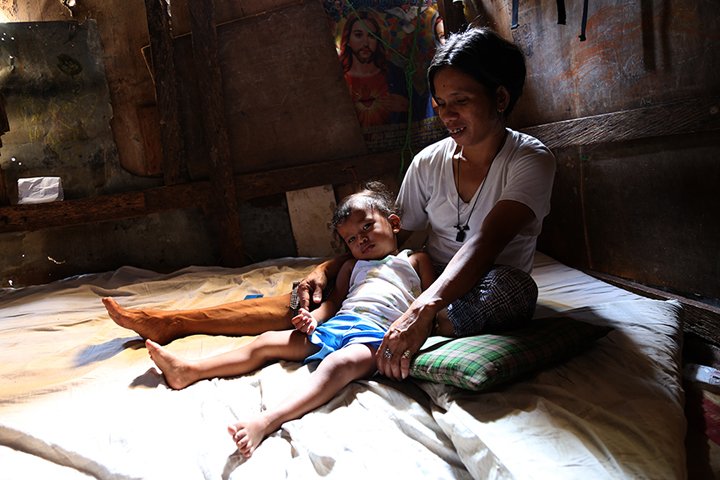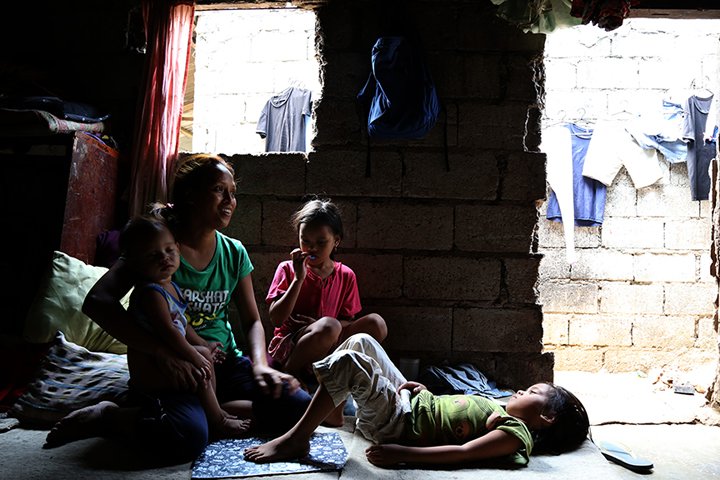Child-focused organization launches ‘first’ Community Management of Acute Malnutrition (CMAM) project in Metro Manila
Save the Children says that Philippines is facing the worst chronic malnutrition rate among children aged 0-2 years old at 26.2% in the last 10 years, the organization cited data from the 2015 Updating of the Nutritional Status of Filipino Children by Food and Nutrition Research Institute (FNRI).
Save the Children also pointed to the FNRI data which reveal that overall chronic malnutrition or stunting rate for children under-5 years old has significantly increased to 33.5% from 30.5 in 2013. In terms of reduction of acute malnutrition or wasting, where a child suffered starvation and illness, there has been almost no progress in the national data.

Dr. Amado Parawan, Save the Children Health and Nutrition Advisor said: “Save the Children knows that the first 2 years of life is considered the critical “window of opportunity” for a child’s optimal growth and development. Any damage caused by stunting or chronic malnutrition during this period is irreversible. ”
“The latest national data also show that children born to the poorest mothers are thrice likely to suffer from stunting. This means that we need to double our efforts to ensure that nutrition-related policies and programs reach the most vulnerable”
In response to findings of various studies, Save the Children has recently launched a Community-based Management of Acute Malnutrition (CMAM) project in Navotas city, which aims to treat and rehabilitate children with severe and moderate acute malnutrition. This is the first ever CMAM project to be implemented in Metro Manila as previous government and multi-sector efforts were done in the Visayas and Mindanao.
Ned Olney, Country Director of Save the Children, said: “It is critical that we make malnutrition visible especially in this upcoming elections. New global health targets (World Health Assembly and Sustainable Development Goals) cannot be achieved without sustained political will and increased nutrition investments in the “First 1000 Days.”
Save the Children is renewing its call to end this unacceptable reality. We are calling future leaders of the country to tackle and commit to the issue of child hunger and malnutrition and to scale up cost-effective and affordable high-impact nutrition interventions to prevent child undernutrition that cripples the country, such as promotion of exclusive breastfeeding, complementary feeding, vitamin A and iron supplementation, treatment of acute malnutrition and maternal nutrition both at national and local levels.
- Save the Children urges that maternal nutrition is prioritized in public and private health facilities. Mothers need as much health care and nutrition as the child before, during and after childbirth to ensure the health and nutrition of infants and young children.
- Once the child is delivered, the first two years of life is critical. We therefore call for the strict and sustained implementation of nutrition-specific interventions such as infant and young child feeding (IYCF), micronutrient supplementation and the Community-based Management of Acute Malnutrition (CMAM). This can only be done through political will and good governance.
- Protect and comply with the country’s “Milk Code” to prevent any attempts to revise and modify the “Milk Code”.
- Address the status of the community-based health and nutrition front-liners e.g. Barangay Health Workers (BHWs) and Barangay Nutrition Scholars (BNSs) by implementing policies and mechanisms that can improve the highly politicized situation, and providing proper incentives and security of tenure, training and needed equipment.
- Ensure that budget allocation for health and nutrition programs are sufficient, appropriate and prioritized.
Support the “First 1000 Days Bill” to enhance the delivery of quality nutrition interventions in the first 1,000 days of life to prevent stunting among children.
NOTES AND APPENDICES:
Table 1.1 Trends in the prevalence of malnutrition among children, 0-2 years old (0-24 months). Philippines, 1989-2015.*
*Source: FNRI-DOST
Table 1.2 Trends in the prevalence of malnutrition among children, 0-5.0 years old (0-60 months): Philippines, 1989-2015*
*Source: FNRI-DOST
Table 1.3 Prevalence of stunting among children, under-five years old (0-59 months) by place of residence and wealth quintile: Philippines, 2015*
*Source: FNRI-DOST
Table 1.4 Prevalence of wasting among children, under-five years old (0-59 months) by place of residence and wealth quintile: Philippines, 2015*
*Source: FNRI-DOST
Table 1.5 Prevalence of nutritionally at-risk Pregnant Women by Wealth Quintile and Place of Residence: Philippines, 2015*
*Source: FNRI-DOST










